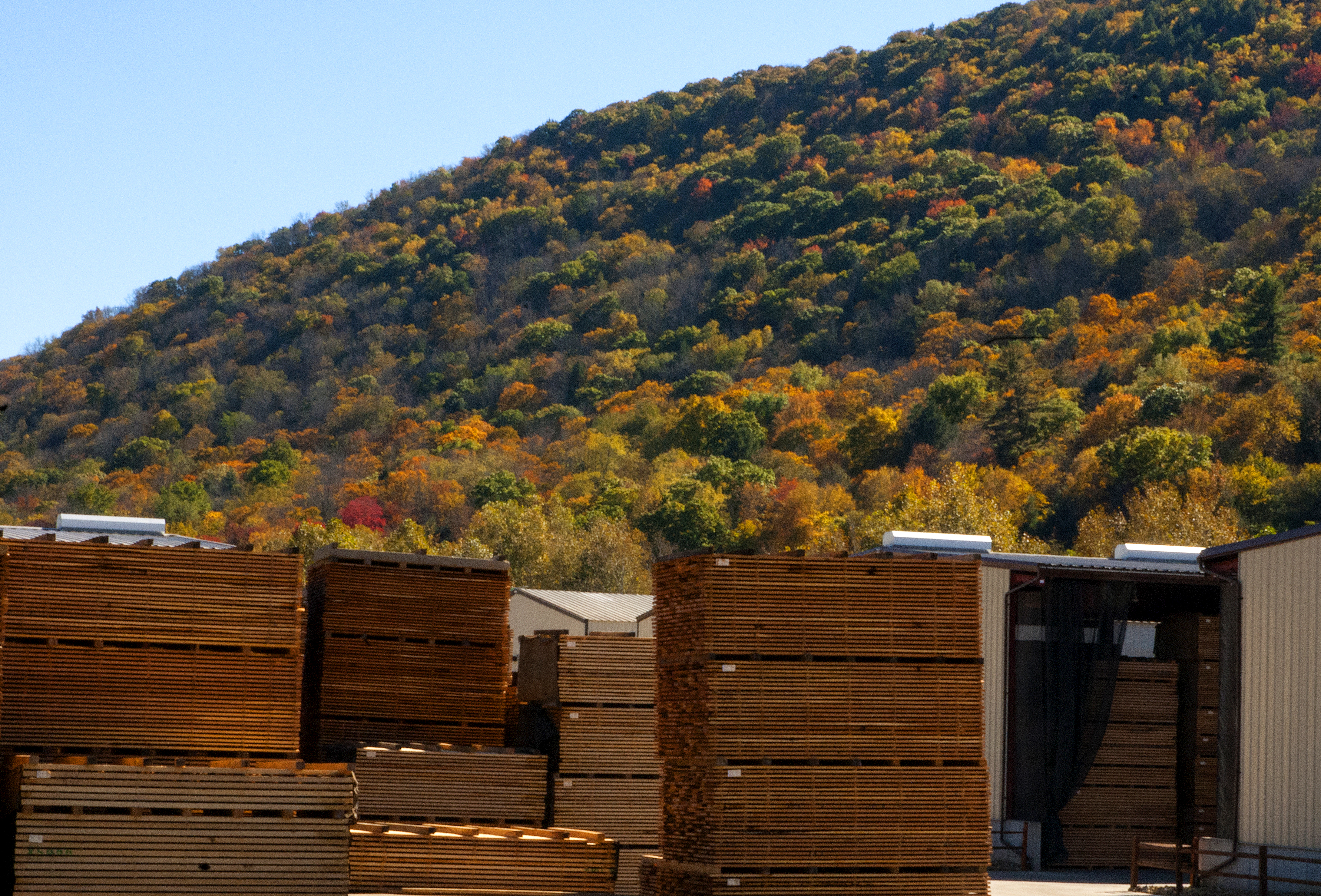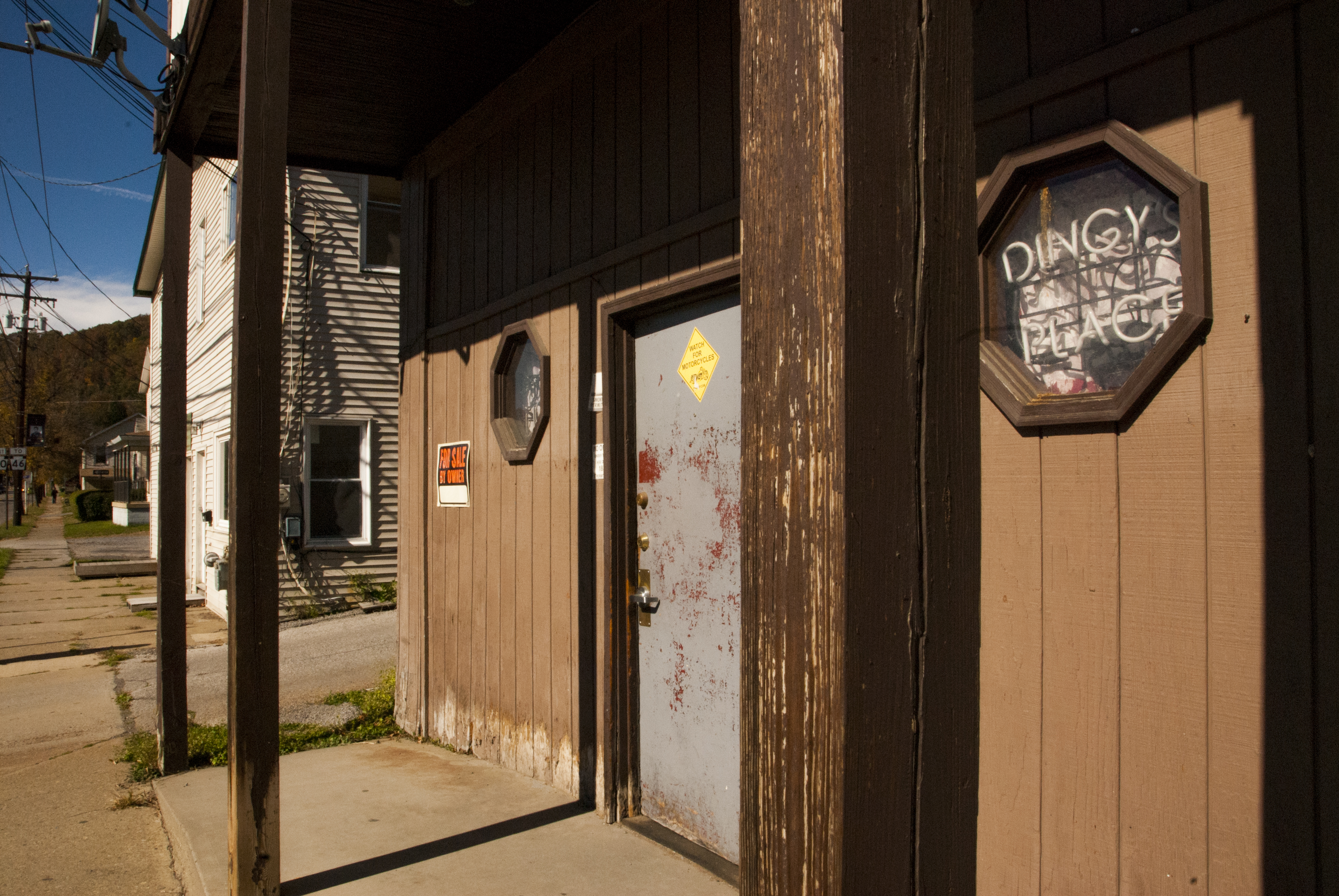Across the U.S., the shale gas industry’s arrival has been marked by wariness, not only of the environmental impacts associated with fracking, but also due to the oil and gas industry’s long history of flashy booms followed by devestating busts.
In towns across the state, the lingering effects of past economic downturns – the flight of manufacturing, the 2008 financial collapse, the slow erosion of the auto and steel industries – have left communities eager for jobs, but also experienced with job loss.
Nowhere better illustrates the potential for a shale rush to heal old economic wounds, or communities’ vulnerability to new ones, than Cameron County, Pennsylvania. At the eastern edges of the rust belt, Cameron County has been hit hard by the decline of the American auto industry.
Hopes for a shale renassiance are running up against some difficult realities. A report released Monday by the Post-Carbon Institute, titled “Drilling Deeper: A Reality Check on US Government Forecasts for a Lasting Tight Oil & Shale Gas Boom,” concludes that the Marcellus shale is unlikely to fully live up to government forecasts, and that natural gas prices will have to rise to keep drilling going across the state. The vast majority of the Marcellus shale is not the same high quality as the areas where drillers are currently focusing most of their efforts, referred to in the industry as “sweet spots,” making the gas there more expensive to produce.
The report also finds that shale gas production in the Marcellus is expected to reach it’s peak in 2018 or 2019 – meaning that within five years, production will begin dropping. “These projections are optimistic in that they assume the capital will be available for the drilling treadmill that must be maintained to keep production up,” the report says. “This is not a sure thing as drilling in the poorer quality parts of the play will require higher gas prices to make it economic.”
A Marcellus shale gas well in Pennsylvania. © 2014 Laura Evangelisto.
Hopes have run high across Pennsylvania that the shale industry’s arrival will bring job growth and economic prosperity. Supporters claim over 30,000 jobs in the drilling industry have already been created, though labor economists have put the figure one third as high. Despite the pro-drilling policies of Governor Corbett, Pennsylvania ranks 42nd in the nation for job growth this past year, and 49th since 2011 when Gov. Corbett took office.
Compared to activity in some regions, the shale gas rush has yet to fully arrive in here in Cameron County, though it’s geographically near the middle of the state’s Marcellus shale. The county lies roughly equidistant from the Marcellus’s twin sweet spots, the highly productive regions of Southwest and Northeast Pennsylvania.
Cameron also has the highest unemployment rate in Pennsylvania, and has since long before the shale rush started.
“There’s really nothing else around,” said Randy Frey, who for 8 years has served on the Borough Council for Emporium, the county’s largest town, describing shale industry jobs in the area. “You go to college, you go to the service, or get a job drilling around here right now.”
Councilmember Randy Frey describes the impact of shale drilling on his Pennsylvania town. © 2014 Laura Evangelisto.
About three dozen wells have so far been drilled in Cameron, mostly on the state game lands that make up over half of the county’s mountainous landscape. Out past the Poconos region that attracts the majority of vacationers from Philadelphia, Cameron County nonetheless holds a roughly equal number of summer cabins and homes owned by year-round residents.
As with the rest of the state, the anticipation of shale wealth has spread to the county, best known for the herds of elk that populate its mountains. But with expectations of a shale boom, come worries about a future bust.
Across the country, where the shale rush has arrived, local officials have discovered that a broad range of hidden costs accompany drilling.
“Industry-funded studies have concluded that there will be large positive impacts on tax revenues and national employment levels,” wrote economist Janette Barth in a 2013 article, “but they have ignored many negative impacts that would be incurred at the local and state levels.”
There’s also concern that a shale boom could be brief and leave small towns worse off than when the industry arrived.
“The negative economic consequences during the bust may exceed the positive direct economic impact during the boom,” Barth added.
The boom-bust cycle is nothing new here in Cameron. From the end of World War II to the late 1970’s, this area was home to three major employers, mostly tied to the auto and lumber industries. “The jobs were good union jobs with good benefits,” explained Frey.
Layoffs started in the late 1970’s, he said, with Motor Coils, a company that builds engines for trains, shedding nearly 90 percent of its 200 workers by the 2000’s. The region has rebounded a little since then – unemployment rates fell to 7.5 percent from its 2009 peak of 18.8 percent.
Councilmember Randy Frey describes the economic history of Cameron County. © 2014 Laura Evangelisto.
This means jobs – especially as die-setters, electricians and in the timber industry – have come back to the area.
Piles of lumber dry below a tree-covered mountain in Emporium, Cameron County. © 2014 Laura Evangelisto.
The drilling industry has also been hiring locals as diesel mechanics and truck drivers. About 32 shale gas wells are actively producing in Cameron County, far fewer than in the so-called “sweet spots,” like Susquehanna or Washington Counties. Frey said that “quite a number” of the new shale industry jobs have gone to out-of-staters but his area has not seen a major uptick in crime.
Still, Frey said, he worries that the drilling industry is a transient and temporary one.
“The people in that line of work do not buy homes, raise kids, pay taxes or even live in the local community,” he said, “so it is difficult to rely on that industry as a solid source of revenue.”
There are also hidden costs that typically get overlooked, he added. The heavy truck traffic to and from the well pads takes a heavy toll on the county’s roads and bridges. By far, the most common quality-of-life complaint he hears from residents concerns the amount of truck traffic – the congestion, the noise, the pollution, the health concerns from the silica sand they’re hauling he said.
Truck traffic has picked up across the Marcellus shale, bringing jobs driving trucks along with the costs of road repairs and responding to accidents. © 2014 Laura Evangelisto.
“Some secondary roads are being repaired by companies involved in the gas business,” he added, “but the major state highways are taking quite a beating, and our small local PennDOT [Department of Transportation] crew is struggling to keep up with the worst of it.”
Other areas where the economic strain shows up: local EMS are more often taking calls related to illness or injuries at well pads and other accidents. This means added expense for the jurisdictions that pay for police and other first responders.
State Rep. Jesse White describes the hidden costs that the drilling rush has brought. © 2014 Laura Evangelisto.
Some of these costs have been offset by gifts from the oil and gas industry but by no means are all of these costs covered. They’ve been forced to make cuts to education recently, and to have their first judicial tax sale in 17 years.
“County and Municipal officials are struggling to maintain services and efficiency without overburdening the remaining taxpayers,” Frey said.
First responders are in higher demand due to natural gas industry’s new presence in Pennsylvania, requiring the training of new firefighters at this state-run facility. © 2014 Laura Evangelisto.
A look at the way the industry has affected other communities, especially where the Marcellus shale is at its richest, serves as a cautionary note to local officials hoping that drilling will be an economic cure-all. “Like I said, Washington County is doing pretty well,” said State Rep. Jesse White, who represents a district where some of the state’s heaviest drilling is already underway, “and if we were really getting all the jobs they were saying we were getting, our unemployment rate should be two or three points lower than the rest of the state. And it isn’t.”
State Rep. Jesse White discusses job growth in Washington County, one of the most heavily drilled parts of the state. © 2014 Laura Evangelisto.
But some of the wariness in Cameron likely stems from the area’s long history of boom and bust.
The downturn of 2008 is hardly the first to hit Cameron County, part of a cycle as old as American capitalism itself. Even before the Civil War, this area has seen repeated natural resource booms and busts. “The business of floating logs began about 1849,” recounts a book, published in 1870, titled “History of the Counties of McKean, Elk, Cameron and Porter, Pennsylvania. “From this small beginning, the business of floating logs has grown to huge proportions, till millions upon millions of feet of lumber have been carried away, till the denuded mountains, panic-stricken, seem to be waiting in mute resignation for another class of toilers to inaugurate a new class of industries.”
Until the 1930’s Pennsylvania led the nation in the production of coal. As with the Marcellus shale, the best spots for mining coal lay outside Cameron County – but the coal industry also left its mark on Cameron, and the state. The state’s coal industry hit its last peak in 1998 and has been on the decline since.
State Rep. Jesse White describes the lessons on offer from the state’s long history of coal mining. © 2014 Laura Evangelisto.
At the same time, the costs of mining keep adding up. While the coal industry contributed more than $130 million to state coffers in 2010-2011, including benefits from both direct and indirect coal industry jobs, the industry cost the state over $295 million – meaning that the state’s costs associated with coal mining were roughly $165 million more than it benefitted, according to a 2012 study prepared for the Center for Coalfield Justice.
Workers have been hard hit too. One major coal and gas company, CONSOL Energy, announced this month that it was freezing pensions for the majority of its workers, part of an effort to shift to 401(k) plans, and cutting health care benefits for workers who retire.
And while the energy industry contributes jobs when it arrives, it can take more than it brought when it leaves. A 2004 study from Colorado found that for every mining job during a coal boom, another 0.2 jobs were created – and a mining job lost during the bust cost double that number.
The downtown area of Emporium, PA, the largest town in Cameron County. © 2014 Laura Evangelisto.
These days in Cameron, it can seem like any job is a good thing.
“The locals that have taken gas/oil jobs are understandably very happy with their situation and are doing quite well,” Frey said.
Still, he said, there was no guarantee the jobs would last. “Ironically, though the area is bustling with activity based on the gas industry,” Frey noted, “those activities tend to be transient in nature.”
Subscribe to our newsletter
Stay up to date with DeSmog news and alerts












